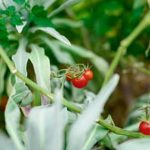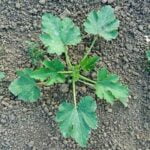As the summer heat begins to wane and the crisp, cool air of fall starts to settle in, it’s time to turn our attention to the bountiful possibilities of fall Texas vegetable gardens. The fall season brings with it a wonderful opportunity for gardeners in Texas to continue growing and harvesting fresh produce, and with the right knowledge and techniques, you can enjoy a successful and abundant autumn harvest.
In this article, we will explore the best vegetables to grow in the fall in Texas, as well as provide tips for preparing the soil, caring for your plants, and extending the growing season. Whether you’re a seasoned gardener or just starting out, there’s something here for everyone who wants to make the most of their fall garden.
From creating a stunning fall garden design to maximizing your harvest through proper care and maintenance, we’ll cover all aspects of fall gardening in Texas. So grab your gardening gloves and get ready to embrace the beauty and bounty of fall Texas vegetable gardens.
Planting Fall Vegetables in Texas
When it comes to planting fall vegetables in Texas, there are a variety of options that thrive in the cooler temperatures and milder conditions. Here are some of the best vegetables to grow in the fall for your Texas garden:
- Broccoli: Broccoli is a great cool-season vegetable that can be planted in late summer for a fall harvest. It prefers well-drained soil and plenty of sunlight.
- Carrots: Carrots are excellent for fall planting in Texas, as they can tolerate the cooler temperatures and are relatively low-maintenance.
- Spinach: Spinach is another cold-hardy vegetable that does well in Texas during the fall season. It can be planted from late summer through early fall and requires regular watering.
- Kale: Kale is a nutrient-dense superfood that thrives in the mild temperatures of a Texas fall. It can be grown from seed or transplants and benefits from rich, well-draining soil.
In addition to these options, other suitable fall vegetables for Texas include lettuce, radishes, turnips, and Swiss chard. When planning your fall garden, consider a mix of leafy greens, root vegetables, and brassicas to ensure a diverse and plentiful harvest.
Overall, fall is an ideal time to plant a variety of vegetables in your Texas garden. By selecting the best options for the season and following proper planting guidelines, you can enjoy a bountiful yield of fresh, homegrown produce as the temperatures begin to cool off.
Preparing the Soil for Fall Planting
The fall season in Texas brings new opportunities for planting and growing a variety of vegetables. One of the key aspects of successful fall gardening is preparing the soil for planting. By taking the time to properly prepare the soil, gardeners can ensure that their fall vegetables have the best possible growing conditions.
To prepare the soil for fall planting in Texas, it is important to start by clearing the garden area of any debris from previous crops and weeds. This will help create a clean slate for new planting. Once the area is cleared, it is essential to test the soil pH and nutrient levels.
Most vegetables grow best in slightly acidic soil with a pH level between 6.0 and 7.0. If necessary, gardeners can adjust the pH of their soil by adding lime or sulfur.
In addition to testing the soil, gardeners should also add organic matter such as compost or well-rotted manure to improve soil structure and fertility. This will provide essential nutrients for the fall vegetables and improve water retention in the soil. By taking these steps to prepare the soil, Texas gardeners can set their fall vegetable gardens up for success and ensure a bountiful harvest.
| Soil Preparation Step | Description |
|---|---|
| Clearing Debris | Remove any leftover debris from previous crops and weeds |
| Testing Soil pH and Nutrients | Check soil pH levels and adjust if necessary, as well as adding nutrients |
| Adding Organic Matter | Include compost or manure to improve soil structure and fertility |
Caring for Fall Vegetables
When it comes to caring for fall vegetables in Texas, maintenance and pest control are essential for a successful harvest. As the temperatures start to cool down, it’s important to keep a close eye on your garden to ensure that your plants are thriving and free from pests. Here are some tips and techniques for maintaining a healthy fall vegetable garden in Texas:
1. Regular Watering: Even though the weather may be cooler in the fall, it’s important to continue watering your vegetable garden regularly. Aim to provide at least 1-2 inches of water per week, either through rainfall or irrigation. Be mindful of any signs of drought stress in your plants and adjust your watering schedule accordingly.
2. Mulching: Applying a layer of mulch around your fall vegetables can help conserve moisture, regulate soil temperature, and suppress the growth of weeds. In Texas, where the fall season can bring fluctuating temperatures, mulching can also help protect delicate root systems from rapid temperature changes.
3. Pest Control: Keeping pests at bay is crucial for ensuring a bountiful harvest in your fall vegetable garden. In Texas, common fall garden pests include aphids, caterpillars, and spider mites. Consider using natural methods such as companion planting or introducing beneficial insects like ladybugs to help control pest populations without resorting to chemical pesticides.
By implementing these maintenance and pest control practices, you can help your fall vegetables thrive in the unique climate of Texas. With proper care and attention, you can look forward to a plentiful harvest of fresh produce from your fall garden.
Harvesting Fall Vegetables
Timing Is Everything
In Texas, the fall season can be quite unpredictable, with fluctuating temperatures and occasional early frosts. It’s important to keep a close eye on the weather forecast as your vegetables near maturity. Harvesting too early may result in underdeveloped produce, while waiting too long could leave your vegetables susceptible to damage from an unexpected cold snap. Be sure to plan your harvest schedule accordingly and be prepared to act quickly if the weather takes a turn.
Proper Harvesting Techniques
When it comes time to harvest your fall vegetables, it’s essential to use the proper techniques to ensure a bountiful harvest. Different vegetables have different methods of harvesting, so be sure to familiarize yourself with the specific needs of each crop in your garden.
For example, root vegetables like carrots and radishes should be gently pulled from the soil, while leafy greens such as lettuce and kale can be harvested by cutting the outer leaves with a sharp knife or scissors.
Maximizing Yield and Storage
To maximize your yield and prolong the enjoyment of your harvest, consider implementing some simple storage techniques. Root vegetables like potatoes and onions should be cured before storage, while others such as peppers and tomatoes can be preserved through canning or freezing. Additionally, consider succession planting in late summer to extend your harvest window into the fall months.
With these tips for harvesting fall vegetables in Texas, you’ll be well-equipped to enjoy a bountiful harvest from your garden this season. Remember that proper timing, harvesting techniques, and storage practices are key elements in ensuring that you make the most of your hard work throughout the growing season. By following these guidelines, you can look forward to enjoying fresh and delicious produce straight from your own backyard well into the fall months.
Fall Garden Design
Selecting the Right Vegetables for Your Fall Garden
When designing your fall vegetable garden in Texas, it’s important to consider which vegetables will thrive in the cooler temperatures. Some popular options for fall planting in Texas include leafy greens like spinach, lettuce, and kale, as well as root vegetables such as carrots, beets, and radishes. Cruciferous vegetables like broccoli, Brussels sprouts, and cauliflower also tend to do well in the fall season. Additionally, herbs like parsley, cilantro, and dill can add flavor to your autumn dishes.
Optimizing Space and Layout
To create a stunning fall vegetable garden in Texas, it’s essential to optimize the space and layout of your garden beds. Consider interplanting different varieties to make the most of the available space and maximize your harvest. Utilize raised beds or container gardening if you have limited space or poor soil quality. Be sure to consider the mature size of each plant when spacing them out to ensure they have enough room to grow.
Incorporating Seasonal Décor
In addition to selecting the right vegetables and optimizing your garden layout, incorporating seasonal décor can add visual interest to your fall vegetable garden in Texas. Decorative elements such as scarecrows, pumpkins, gourds, and colorful mums can enhance the overall aesthetic of your garden while embracing the spirit of autumn. Additionally, consider adding trellises or other support structures for vining plants like cucumbers or peas to create height and dimension in your garden design.
Extending the Fall Growing Season
As the fall season settles in, many gardeners in Texas find themselves reluctant to say goodbye to their beloved vegetable gardens. Fortunately, there are several techniques that can help prolong the growing season, allowing you to continue enjoying fresh produce well into the fall and even winter months. By implementing these methods, you can make the most of your Texas garden and continue reaping the rewards of your hard work.
One effective technique for extending the fall growing season in Texas is utilizing row covers or cold frames. These protective coverings can shield your plants from frost and chilly temperatures, creating a more favorable environment for continued growth. Additionally, creating raised beds can help with drainage and soil warming, promoting healthier plant development during cooler weather. By employing these strategies, you can ensure that your fall vegetables have the best possible chance of thriving.
Furthermore, consider using mulch to insulate and protect your plants from temperature fluctuations. Mulching around your vegetables helps regulate soil temperature and moisture levels, creating a more stable and hospitable environment for plant roots. Additionally, interplanting cold-hardy crops with more sensitive varieties can provide mutual protection against harsh weather conditions. By diversifying your garden with a mix of resilient vegetables, you can increase the likelihood of a successful fall harvest.
| Technique | Advantages |
|---|---|
| Row Covers/Cold Frames | Protection from frost and chilly temperatures |
| Raised Beds | Improved drainage and soil warming |
| Mulching | Regulated soil temperature and moisture levels |
| Interplanting | Mutual protection against harsh weather conditions |
Conclusion
As the fall season approaches in Texas, gardeners have an exciting opportunity to continue their garden’s bounty well into the cooler months. With the right knowledge and preparation, the fall season can be just as fruitful as the spring and summer. By planting a variety of vegetables that thrive in the fall, preparing the soil, caring for the plants, and extending the growing season, Texas gardeners can enjoy a beautiful and bountiful fall vegetable garden.
One of the keys to success in fall Texas vegetable gardens is choosing the right vegetables to grow. Some of the best options for fall planting in Texas include broccoli, kale, carrots, spinach, and lettuce. These vegetables are not only cold-hardy but also thrive in the milder temperatures of autumn. By selecting these varieties and following proper gardening techniques, gardeners can ensure a successful harvest.
In addition to choosing the right vegetables, proper soil preparation and maintenance are essential for a thriving fall vegetable garden in Texas. By amending the soil with organic matter and providing adequate nutrients for plant growth, gardeners can create an optimal environment for their crops to flourish.
In addition, implementing pest control measures and extending the growing season through techniques such as row covers or cold frames can help protect and prolong the life of fall vegetables in Texas gardens. With careful planning and attention to detail, it is possible to embrace both the beauty and bounty of fall Texas vegetable gardens.
Frequently Asked Questions
What Vegetables Can You Plant in the Fall in Texas?
In the fall, you can plant a variety of vegetables in Texas, including broccoli, Brussels sprouts, cabbage, cauliflower, kale, lettuce, radishes, spinach, and Swiss chard. These cooler weather crops thrive in the mild Texas fall.
When Should I Start My Fall Vegetable Garden?
For a fall vegetable garden in Texas, it’s best to start planting in late August or early September. This timing allows the vegetables to establish themselves before the first frost while still benefiting from the lingering warmth of summer.
What Vegetables Can You Plant in August in Texas?
In August, you can plant several vegetables in Texas, such as cucumbers for a fall harvest and warm-season greens like collard greens and mustard greens. Additionally, you can start sowing seeds for beets and carrots for a late fall or winter harvest.

If you’re looking to get into vegetable gardening, or are just looking for some tips on how to make your current garden better, then you’ve come to the right place! My name is Ethel and I have been gardening for years. In this blog, I’m going to share with you some of my best tips on how to create a successful vegetable garden.





